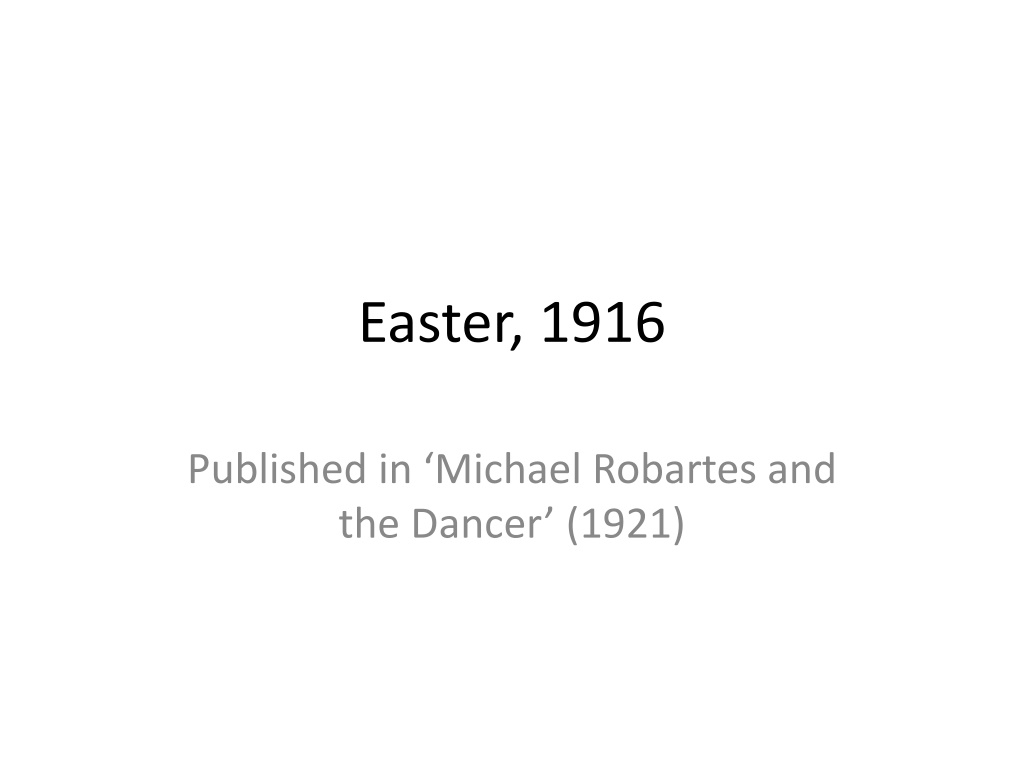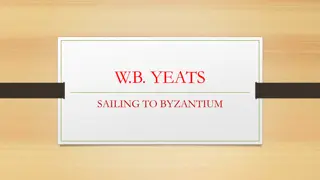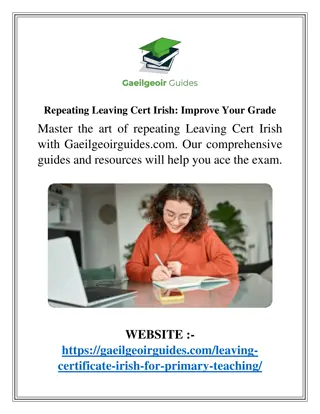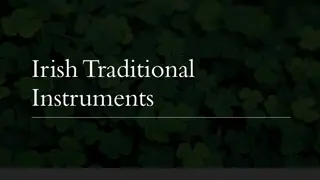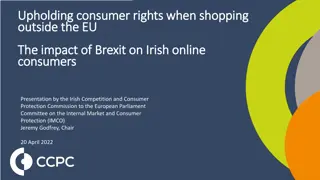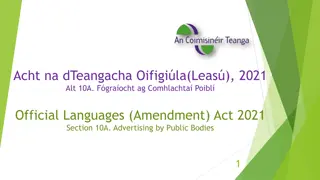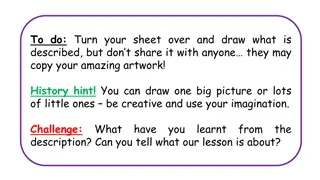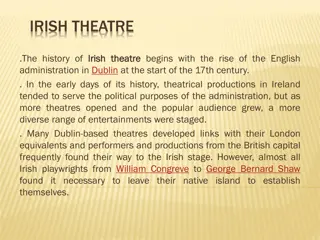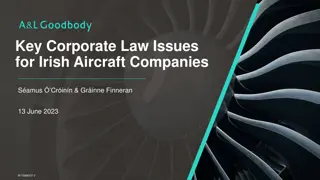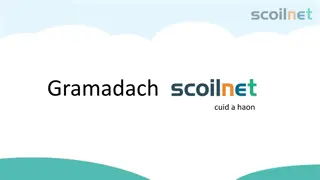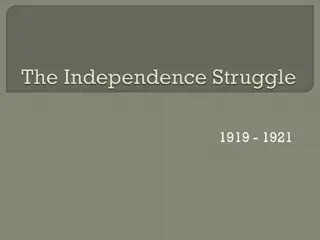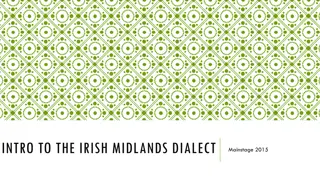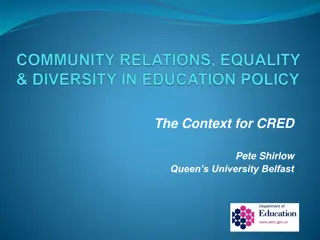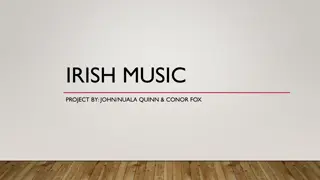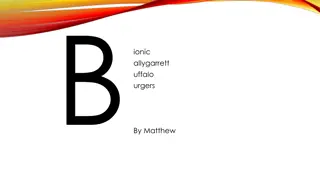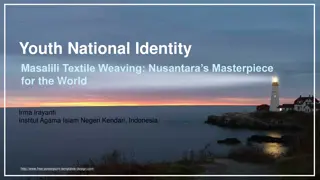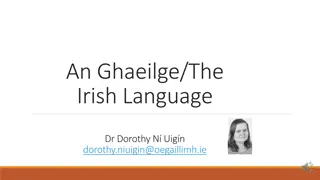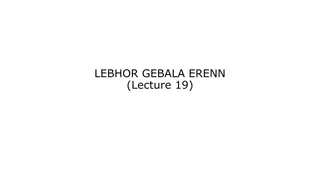Irish History and National Identity
Delve into the rich tapestry of Irish history, from the Norman invasion to the establishment of the Irish Republic. Explore how literature and rebellion shaped Irish identity, culminating in events such as the Easter Rising and the War of Independence. Witness the evolution of Irish culture and the enduring spirit of its people through centuries of turmoil and resilience.
Download Presentation

Please find below an Image/Link to download the presentation.
The content on the website is provided AS IS for your information and personal use only. It may not be sold, licensed, or shared on other websites without obtaining consent from the author. Download presentation by click this link. If you encounter any issues during the download, it is possible that the publisher has removed the file from their server.
E N D
Presentation Transcript
Easter, 1916 Published in Michael Robartes and the Dancer (1921)
Background: AO4 At Easter 1916 1,000 Volunteers and 200 Citizen Army seize the GPO and other sites in Dublin, proclaiming an independent Republic with a provisional government led by Padraic Pearse. The rebels surrendered after a week's fighting. The Government's harsh response turned 16 rebel leaders into Nationalist martyrs and created powerful myths which would sustain future conflicts.
The foundation of a myth: a terrible beauty is born Yeats notes at the end of this poem, all are changed, changed utterly,/ A terrible beauty is born. This clip from 1934, which shows the commemoration of this event, illustrates how prescient Yeats prediction was: http://clipbank/espresso/clipbank/servlet/link?mac ro=setresource&template=vid&resourceID=1413
Literature as a revenge Oscar Wilde: The Saxon took our lands from us and made us destitute . . . but we took their language and added new beauties to it. That a country with the population of Alabama or Kentucky, a place occupied for over 800 years with its indigenous language, history, and culture almost eradicated should produce writers who have dominated English and world literature is nothing short of miraculous. It is Ireland s ultimate revenge on the British: co-opting their language and affixing and Irish accent on English literary culture. (from Litchfield talks)
Timeline of Irish History 1167 Arrival of the Norman Warlords at the invitation of King of Leinster, Dermot McMurrogh who had petitioned King Henry II for assistance. 1690 Defeat of Catholic forces of James II by William of Orange at the Battle of the Boyne. 1695 First of the Penal Laws instituted against Catholics in Ireland that banned Catholic worship and restricted education and property. 1782 Grattan Parliament establishes legislative independence. 1798 United Irish Rebellion 1800 The Act of Union dissolves Irish parliament in Dublin and transfers legislative control to Westminster, effectively ending self-rule. 1829 Catholic Emancipation gained largely from the efforts of Daniel O Connell. 1845 - 1848 Great Famine 1847 Fenian Rebellion suppressed. 1875 - 1889 Home Rule effort led by Charles Stewart Parnell. 1916 - Easter Rising 1919 - 1921 War of Independence 1922 Treaty creating the Irish Free State and partitioning Ireland. 1922- 1923 Irish Civil War 1949 Irish Republic established
Recap Yeats role to re-claiming Irishness 1. Revival of pre-Christian beliefs, folk tales, myths and legends, and ennobling of the spirituality of Irish peasants, which had once been dismissed as primitive superstitions. 2. Dramatisation of Irish identity through the Abbey Theatre (the first Irish National Theatre of its kind)
Easter 1916 things to consider Merging of public and private Maud Gonne married Irish nationlist John Macbride who abused her but became a national hero through his role in Easter Uprising September 1913 vocalises disappointment that is both personal and public: failure in love and disillusion with Irish attitudes and values Arguably, the Easter Uprising forces Yeats to revive and reconsider beliefs he thought were dead and gone .
Yeats on the writing of the poem I am trying to write a poem on the men executed a terrible beauty has been born again .. I had no idea that any public event could so deeply move me- and I am very despondent about the future. At the moment I feel that all the work of years has been overturned, all the bringing together of classes, all the freeing of Irish literature and criticism from politics. (in a letter to Maud Gonne)
A poem of contradictions? The rebels had achieved dignity and martyrdom but at what cost? They had transformed the present but what would the future be? Now Macbride was dead, would Maud Gonne accept his final proposal?
Interpretations which do you most agree with? A eulogy to fallen heroes A quarrel between the public and private A poet speaking with two voices; an antithetical vision
